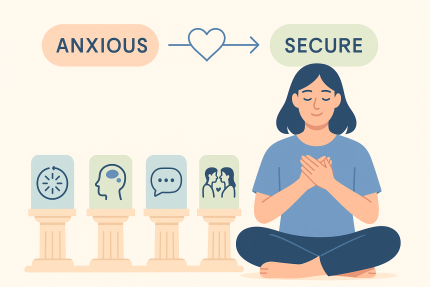Achieving Clear Vision: The Ultimate Guide to Vision Correction
- 18 November 2022

Clear vision is a fundamental aspect of life that allows us to perceive the world around us. However, several factors can affect our eyesight, leading to vision problems that affect our daily activities. Luckily, various vision correction methods can help us restore clear vision and prevent further damage. This article delves into vision correction and explores the different types of treatments available.
Understanding Vision Problems
Vision problems can result from various factors, including genetics, age, injuries, or underlying health conditions. Some common vision problems include nearsightedness, farsightedness, astigmatism, and presbyopia. Each of these conditions affects the eye's ability to focus correctly, resulting in blurred or distorted vision. In some cases, vision problems can lead to severe conditions such as glaucoma, cataracts, or macular degeneration, which require prompt medical attention.
Nearsightedness is a common vision problem that results from a cornea that is too steep or an eye that is too long, causing light rays to focus in front of the retina instead of directly on it. As a result, distant objects appear blurred. Farsightedness, on the other hand, results from a cornea that is too flat or an eye that is too short, causing light rays to focus behind the retina. As a result, close-up objects appear blurred. Astigmatism is a condition where the cornea is irregularly shaped, causing light rays to focus on multiple points on the retina, resulting in distorted or blurred vision. Presbyopia is a condition that occurs with age, where the eye's lens becomes less flexible, making it difficult to focus on close-up objects.
Types of Vision Correction
There are several vision correction methods available, depending on the severity and type of vision problem. Some common vision correction methods include:
- Glasses: Glasses are the most common and straightforward method of correcting vision. They work by bending light rays to compensate for the eye's refractive errors. Glasses come in various shapes, sizes, and materials to suit individual preferences.
- Contact lenses: Contact lenses are an alternative to glasses and work by sitting directly on the cornea to correct refractive errors. They come in different types, including soft lenses, rigid gas-permeable lenses, and hybrid lenses.
- LASIK surgery: LASIK surgery is a popular procedure that involves reshaping the cornea using a laser. It is an outpatient procedure that can correct various vision problems, including myopia, hyperopia, and astigmatism.
- PRK surgery: PRK surgery is similar to LASIK but involves removing the cornea's outer layer before reshaping it. It is a suitable option for patients with thin corneas or other corneal irregularities.
- Intraocular lenses: Intraocular lenses are implantable lenses used to replace the natural lens in the eye. They are a suitable option for patients with cataracts or presbyopia.
Choosing the Right Vision Correction Method
Choosing the right vision correction method depends on various factors, including the severity and type of vision problem, personal preferences, lifestyle, and budget. For instance, LASIK or PRK surgery may not be suitable for individuals with thin or irregular corneas, while contact lenses may not be suitable for those with dry eyes or allergies. It is essential to consult with an eye doctor to determine the best option based on individual needs and preferences.
Choosing the right vision correction method depends on various factors, including the severity and type of vision problem, personal preferences, lifestyle, and budget. LASIK or PRK surgery may not be suitable for individuals with thin or irregular corneas, and contact lenses may not be suitable for those with dry eyes or allergies. It is essential to consult with an eye doctor to determine the best option based on individual needs and preferences. Factors such as age, activity level, and daily habits, such as the use of digital devices, should also be considered.
Tips for Maintaining Healthy Vision
- Maintaining healthy vision is crucial for preventing vision problems and preserving clear vision. Some tips for maintaining healthy vision include:
- Regular eye exams: Regular eye exams help detect vision problems early and prevent further damage.
- Eating a healthy diet: A balanced diet rich in vitamins and minerals can help prevent eye diseases and promote healthy vision.
- Wearing protective eyewear: Protective eyewear such as goggles or sunglasses can protect the eyes from injuries and UV rays.
- Resting the eyes: Resting the eyes and taking breaks from screens can prevent eye strain and fatigue.
Conclusion
Vision correction is essential for restoring clear vision and preventing further damage to the eyes. There are several vision correction methods available, depending on the type and severity of the vision problem. Choosing the right vision correction method depends on individual needs and preferences. Maintaining healthy vision is crucial for preventing vision problems and preserving clear vision. By following the tips outlined in this article, individuals can maintain healthy vision and prevent vision problems.




